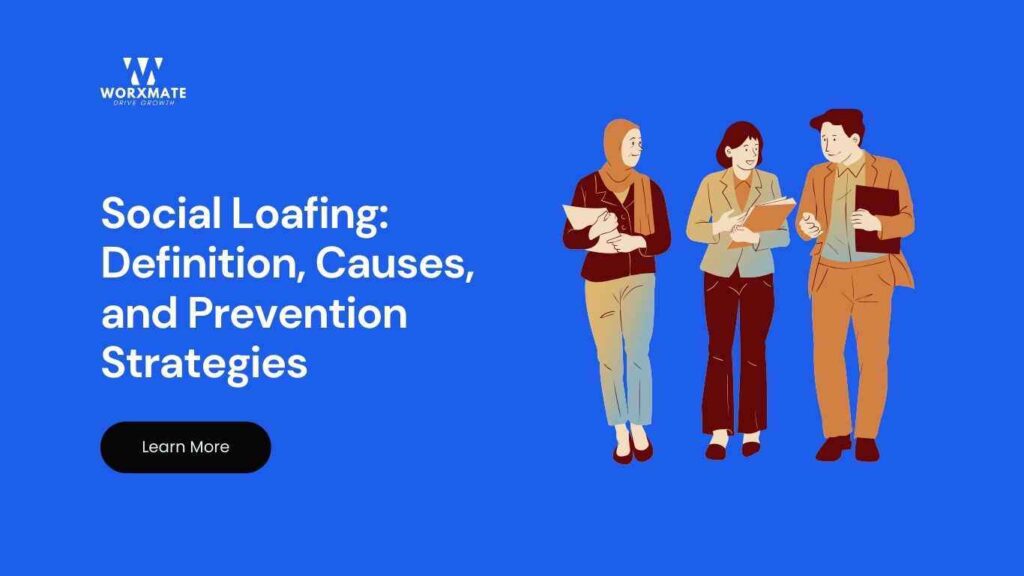Summary:
Social loafing is when people don’t try as hard in a group as they would if they were working alone. This can make the whole team less productive and less motivated. It usually happens because people feel less responsible, think no one will notice their work, or feel the workload isn’t fair. If it isn’t fixed, social loafing can cause businesses to lose a lot of progress. The good news is that it can be stopped. Teams do better when everyone has clear goals, gets credit for their work, and uses tools to track what each person is doing.
Imagine you’re in a team brainstorming session—yet you notice some members barely contribute. This phenomenon, known as social loafing, quietly saps group effectiveness and can leave star performers frustrated.
In today’s collaborative workplaces, where cross-functional teams and virtual meetings are the norm, combating social loafing is more critical than ever for sustaining high performance and engagement.
By understanding its root causes and learning how to foster individual accountability, teams can unlock their full potential—and that’s where clear objectives and the right collaboration tools come into play.
What Is Social Loafing?
Social loafing describes the tendency for individuals to put in less effort when working in a group than when working alone. First identified by Ringelmann in 1913 through rope-pulling experiments, this “Ringelmann effect” highlighted how performance per person drops as group size increases.
Today, it remains one of the most cited phenomena in social psychology, impacting teams across industries and settings.
Causes of Social Loafing
-
Diffusion of Responsibility
When a group shares responsibility for a task, each member often feels less personally accountable for the outcome. This “spreading out” of responsibility makes individuals believe that their own effort isn’t crucial, so they may not try as hard. The larger the group, the more likely people are to assume someone else will pick up the slack.
-
Lack of Individual Accountability
Social loafing is more likely when roles are unclear or when individual contributions aren’t tracked. If people think their work won’t be noticed or measured, they may put in less effort. Clear performance tracking and defined roles help ensure that everyone knows what they’re responsible for and that their efforts matter.
-
Perceived Inequity
When team members feel that effort and rewards are not distributed fairly, motivation drops. If someone sees others doing less but getting the same award or reward, they may reduce their own effort to match, leading to a cycle of social loafing within the group.
-
Group Size and Anonymity
In larger teams, it’s easier for individuals to hide and for their contributions to go unnoticed. When tasks are not visible or when people feel anonymous within the group, they may believe their input is less important, further decreasing their motivation to participate fully.
The Impact of Social Loafing in the Workplace
What is the outcome of social loafing in the workplace? The effects can be far-reaching and detrimental to both team dynamics and organizational success.
-
Decreased Productivity
The most immediate consequence of social loafing is reduced overall productivity—both in quantity and quality. Globally, disengaged or loafing employees contribute to an estimated $8.8 trillion in lost productivity, accounting for nearly 9% of the global GDP.
-
Lower Quality of Work and Engagement
The quality of work inevitably declines when team members aren’t fully engaged—a common outcome of social loafing. As individuals put in less effort, critical details are overlooked, innovation stalls, and the final deliverables lose their impact. According to recent data, only 31% of U.S. workers feel engaged, and social loafing is a major contributor to this disengagement and the resulting drop in both motivation and work quality.
-
Reduced Morale and Team Cohesion
Social loafing creates an imbalance in workload distribution that breeds resentment. High performers who consistently pick up the slack often experience burnout and frustration, damaging team relationships and cohesion.
-
Increased Dependence on High Performers
Teams with prevalent social loafing develop unhealthy dependence on their most productive members. This dependence creates bottlenecks in workflows and places unsustainable pressure on top contributors.
-
Inequity and Conflict
Perhaps most damaging to long-term team health is the sense of inequity that develops. Hard-working team members resent those who contribute less while receiving equal credit, leading to interpersonal conflicts and a toxic work environment.
Examples of Social Loafing
Social loafing manifests in numerous everyday situations:
-
Tug-of-War Games
As demonstrated in Ringelmann’s original experiments, when more people join a tug-of-war team, each person tends to pull less forcefully than they would individually. The larger the group, the less effort each participant exerts.
-
School Group Projects
Perhaps the most relatable example for many is the school group assignment. Often, one or two dedicated students end up handling the majority of the work while others contribute minimally, yet everyone receives the same grade.
-
Team Sports
In team sports, social loafing can occur when certain players exert less effort, relying on star players to carry the team. Other team members might focus solely on passing the ball to the star player or disengage entirely from the game.
-
Brainstorming Sessions
During group brainstorming, some participants may sit back and let others generate ideas. Without individual accountability for idea contribution, groups often produce fewer ideas collectively than they would have generated working independently.
Case Study: McKinsey’s Approach to Combating Social Loafing
According to research by McKinsey & Company, addressing social loafing has become a priority for organizations seeking to optimize team performance.
Bill Schaninger, senior partner at McKinsey, describes social loafing as when “someone in the team figures out that if they just show up, they don’t actually have to do much of the work because someone there will always do it”.
In a study conducted with global companies, McKinsey found that teams structured with clear individual accountability measures experienced significantly higher productivity compared to teams without such measures.
They developed a team accountability framework that has been implemented with several Fortune 500 clients with impressive results.
One technology company that restructured its product development teams using accountability-focused practices saw a notable increase in on-time product deliveries and substantial improvement in team member satisfaction scores within less than a year.
How to Reduce Social Loafing
Fortunately, social loafing isn’t inevitable. Here are effective strategies to minimize its occurrence:
-
Establish Clear Individual Responsibilities
Assign specific, well-defined roles and tasks to each team member. When everyone understands exactly what they’re responsible for, accountability increases and social loafing decreases.
-
Implement Individual Assessment
Evaluate and recognize individual contributions alongside team performance. This dual assessment approach ensures that each person’s work is noticed and valued.
-
Optimize Team Size
Keep teams small and focused when possible. Research consistently shows that social loafing increases with group size. Smaller teams make individual contributions more visible and necessary.
-
Foster Team Cohesion and Identity
Build a strong team identity and promote shared values. When team members feel connected to the group and its goals, they’re more likely to contribute fully.
-
Leverage Technology for Transparency
Utilize project management tools like Worxmate that track individual contributions and progress. Modern software solutions provide visibility into who’s doing what, creating natural accountability.
Conclusion
Social loafing can hurt teamwork by making some people put in less effort, which lowers productivity and team spirit. But you can reduce this by giving everyone clear roles, keeping track of progress, and building smaller, focused teams.
To make this easier, Worxmate’s OKR software is a powerful tool. It helps teams stay on track by connecting each person’s work to team goals and showing progress in real time.
This way, everyone’s effort is visible and appreciated. Want to stop social loafing and help your team do their best work? Book a free Demo with Worxmate and see the difference it makes.



